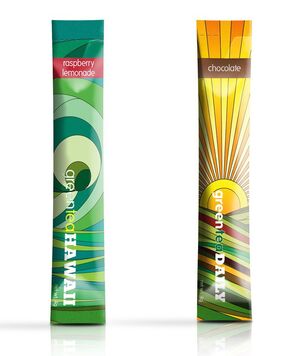Top Trends in Sachet Packaging for Malaysian Products
Corps
In Malaysia, sachet packaging has become a vital tool for brands seeking to captivate consumers with convenience, affordability, and practicality. From food and beverages to cosmetics and pharmaceuticals, sachets are transforming how products are delivered to customers. As businesses adapt to shifting market demands, emerging trends in sachet packaging are shaping the future of the industry.
1. Sustainability Takes Center Stage
With growing environmental concerns among Malaysian consumers, brands are turning to sustainable packaging solutions. Sachets made from biodegradable materials or recyclable plastics are gaining traction. Companies are also exploring mono-materials, which are easier to recycle compared to multi-layered options.
This shift isn’t just about reducing waste; it’s about aligning with consumer values. Brands that prioritize eco-friendly sachet packaging often gain a competitive edge, fostering trust and loyalty.
2. Smart Packaging Technology
The integration of technology in sachet packaging is on the rise. QR codes and augmented reality (AR) features are being added to sachets to engage consumers with interactive content. For example, a quick scan could lead to recipes, usage instructions, or information about the brand's sustainability efforts.
These smart features also enable traceability, allowing consumers to verify the authenticity of the product—an increasingly important factor for Malaysian shoppers, particularly in the health and beauty sectors.
3. Minimalist Design with Maximum Impact
Modern sachet packaging is embracing minimalist aesthetics. Clean, simple designs with bold typography and natural colors resonate with consumers who value authenticity and transparency. This trend aligns with the “less is more” philosophy, where packaging focuses on delivering essential information in an uncluttered format.
Minimalist sachets also cater to Malaysia’s fast-paced lifestyles, making it easier for consumers to identify products quickly on the shelves.
4. Portion Control and Single-Use Convenience
Sachets are synonymous with convenience, offering pre-measured portions that suit today’s on-the-go culture. In Malaysia, single-use sachets are particularly popular for products like instant coffee, seasonings, and personal care items.
For consumers, sachets eliminate waste and ensure consistency in usage. For brands, this trend opens the door to trial-sized packaging, which attracts new customers and drives product sampling.
5. Premiumization of Sachet Packaging
Gone are the days when sachets were limited to budget-friendly products. Today, even premium brands are adopting sachet packaging to cater to diverse consumer needs. High-end cosmetics, gourmet foods, and luxury teas are now being packaged in elegant sachets that exude sophistication.
This premiumization not only appeals to affluent buyers but also makes luxury products more accessible to middle-income groups.
6. Focus on Hygienic Packaging
The COVID-19 pandemic heightened the demand for hygienic packaging, and sachets have emerged as a practical solution. Individual sachets minimize contact, ensuring that the product remains uncontaminated until use. This feature has been particularly impactful in sectors like food, beverages, and healthcare.
Malaysian brands are leveraging this trend by promoting the safety and hygiene benefits of their sachet packaging, further reinforcing consumer confidence.
7. Innovative Shapes and Formats
Creativity in sachet design is redefining the packaging landscape. Instead of traditional rectangular sachets, brands are experimenting with unique shapes and formats to stand out. From spouted sachets for liquids to easy-tear designs for dry products, innovation is enhancing both functionality and visual appeal.
In Malaysia, playful and eye-catching sachet designs are especially popular among younger consumers, making them a powerful tool for capturing the attention of Gen Z and Millennials.
8. Cultural Customization
Malaysia’s diverse cultural landscape calls for packaging that resonates with local traditions and preferences. Sachet designs often incorporate elements of Malaysian culture, such as batik patterns or references to iconic foods like nasi lemak and durian.
This cultural customization helps brands establish a deeper connection with their audience while celebrating Malaysia’s rich heritage.
9. Enhanced Barrier Properties
For products like spices, coffee, and skincare items, maintaining freshness is crucial. Modern sachets are equipped with advanced barrier properties that protect contents from light, moisture, and oxygen.
These high-performance materials ensure that products retain their quality for longer periods, offering value to both brands and consumers in Malaysia's tropical climate.
10. Affordability and Accessibility
Affordability remains a key driver of sachet packaging in Malaysia. For many households, sachets offer an economical way to purchase essential items without committing to larger quantities. This is especially significant in rural areas, where single-use packaging aligns with the purchasing power of the local population.
Moreover, sachets enable brands to penetrate new markets by making products accessible to a wider demographic.
Why Sachet Packaging Matters for Malaysian Brands
Sachet packaging is more than just a practical solution—it’s a strategic marketing tool that caters to evolving consumer needs. By embracing trends like sustainability, smart technology, and premiumization, brands can stay ahead of the competition while fostering meaningful connections with their audience.
As the demand for sachet packaging continues to grow, Malaysian businesses have a unique opportunity to innovate and differentiate themselves. Whether it’s through eco-friendly materials, cultural design elements, or advanced functionality, sachet packaging is poised to play a pivotal role in shaping the future of Malaysia’s product landscape.
Conclusion
Sachet packaging has become an integral part of Malaysia’s consumer culture, offering convenience, affordability, and versatility. As brands embrace new trends and technologies, the potential for innovation is limitless. For businesses looking to thrive in a competitive market, investing in sachet packaging trends isn’t just an option—it’s a necessity.










commentaires